In this article will learn about the difference between population vs sample with the help of examples, also you will learn the advantages and disadvantages of sample and population. Also, you will learn about how data is collected from a population and a sample.
Many students do not understand the fundamental distinction between the population and the sample. However, while analyzing data, it is critical to understand the distinction between the two concepts.
What is Population?
A population is the entire group of items that you want to draw conclusions about. A sample is a specific set of items selected from the population.

The population is the complete group of individuals, events, or things of interest that the researcher desires to study. It is the set of individuals, events, or items of interest from which the researcher wishes to draw conclusions.
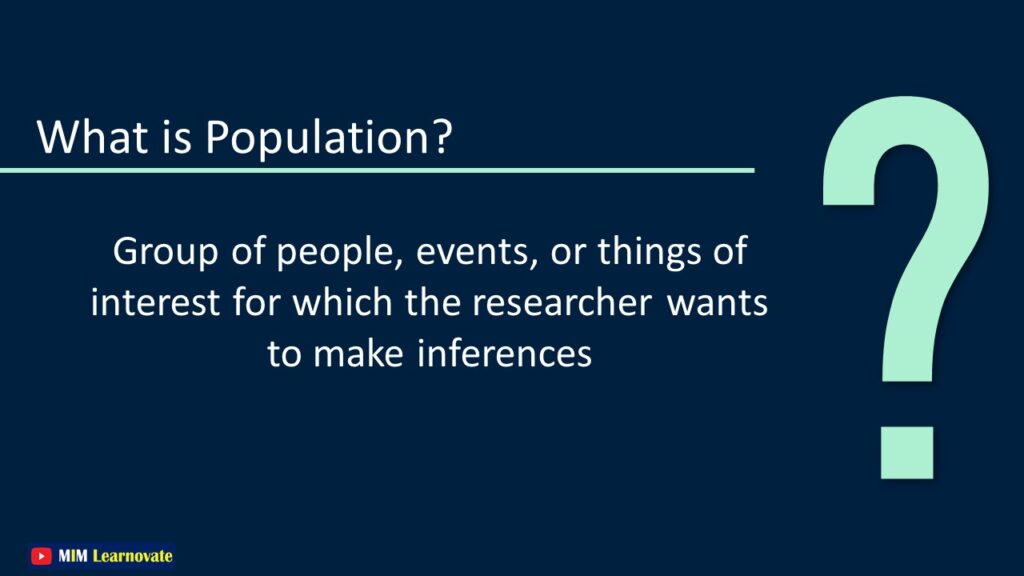
Example
1- For example, if the CEO of a software corporation wishes to discover the kind of advertising methods used by computer firms in Tech Sector, the population will include all software enterprises located there.
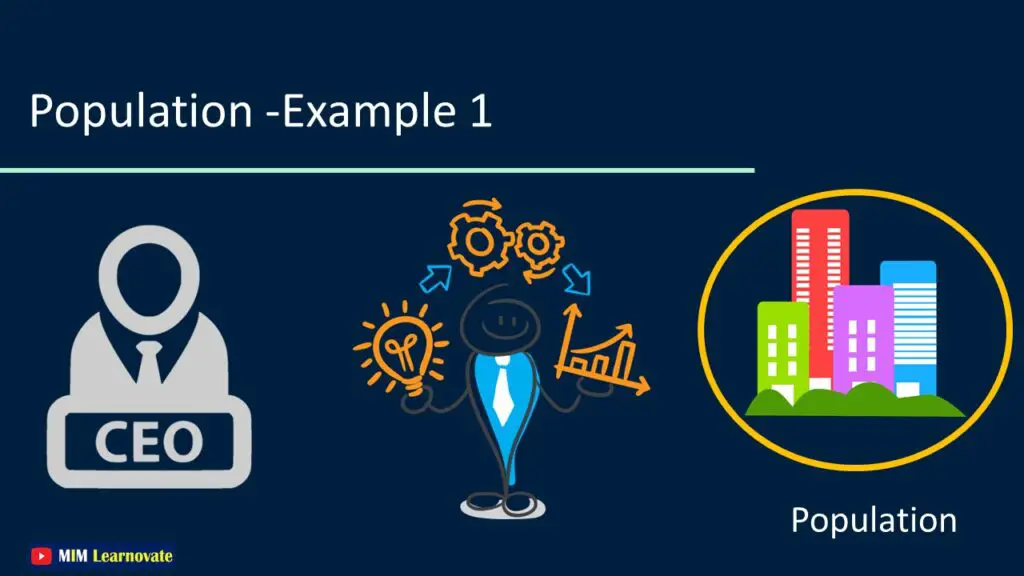
2- If an organizational analyst wants to investigate the effects of a four-day work week on white-collar workers in an Irish telephone company, the population will be all white-collar workers in that company. If regulators want to know how patients in healthcare facilities owned by a French firm are being treated,
What is Sample?
A subset of the population is referred to as a sample. It has some members chosen from it. In other words, the sample includes some but not all of the population.
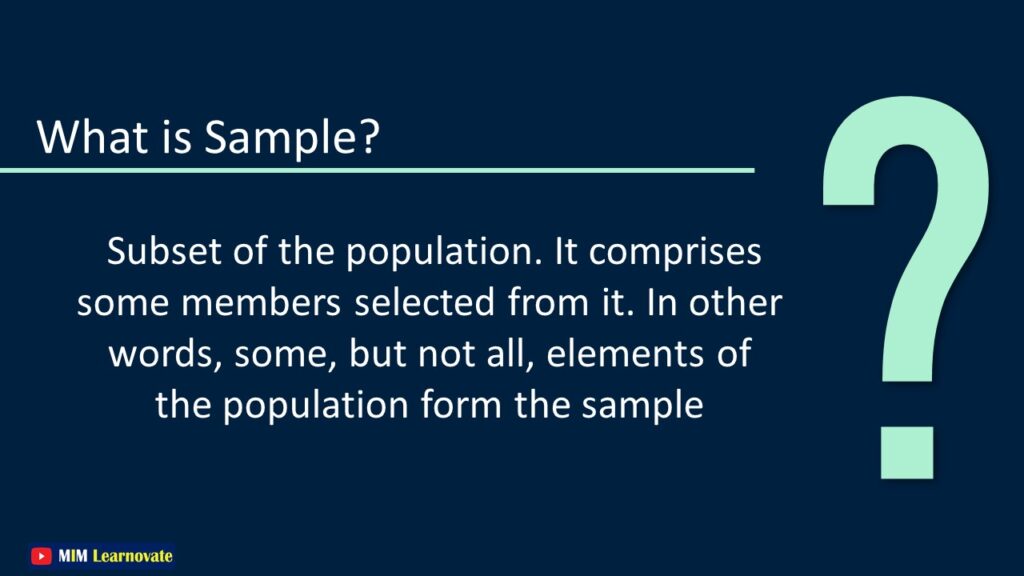
Example
1- If 300 people are picked from a population of 1500 blue-collar employees, these 300 people will constitute the study’s sample. That example, the researcher will make conclusions about the entire community of 1500 blue-collar employees based on a study of these 300 members.
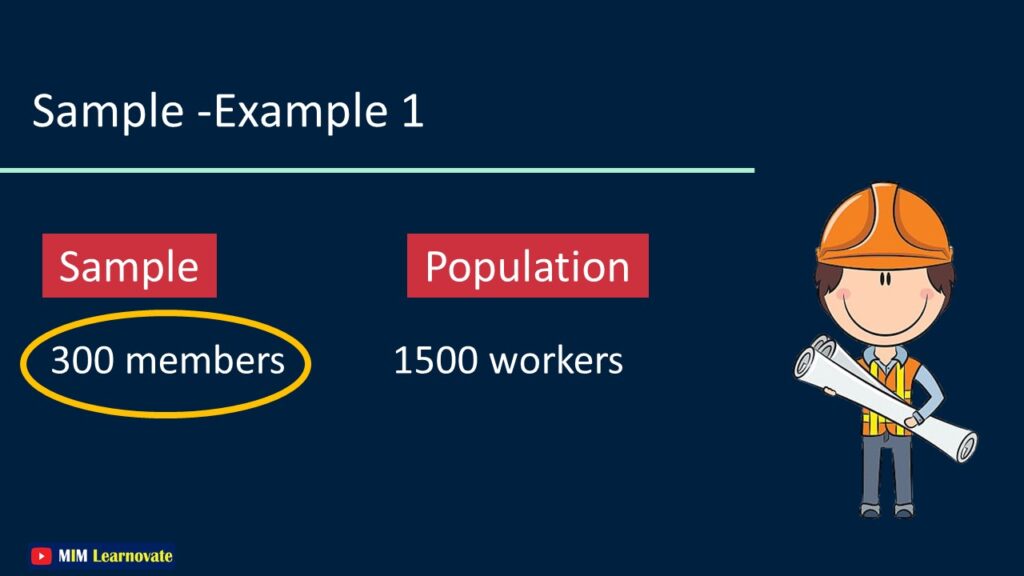
2- Similarly, if a hospital has 150 inpatients and 50 of them are to be surveyed by the hospital administrator to determine their degree of satisfaction with the treatment received, then these 50 members will be the sample.
As a result, a sample is a subgroup or subset of the population. The researcher should be able to make findings that are generalizable to the population of interest by studying the sample.
The purpose of a sample is to provide information about the population that can be used to draw conclusions about the population as a whole.
Types of samples
There are two types of samples:
- Random samples
- Non random samples
Random samples
Random samples are samples that are selected in such a way that every item in the population has an equal chance of being selected.
Non random samples
Non random samples are samples that are not selected in such a way that every item in the population has an equal chance of being selected.
Population vs Sample
| Population | Sample |
| Entire group | Specific group |
| Size is large | Size is small |
| Measurable quality is called a parameter | Measurable quality is called a statistic |
| Complete set | Subset of population |
- A population is the total group about which you want to draw conclusions.
- A sample is the precise group from which you will gather data.
- The population size is large, yet the sample size is always less than the total population size.
- A parameter is a measurable quality in population.
- A statistic is a measurable quality in a sample.
- The population is one entire set.
- A sample is a subset of a population.
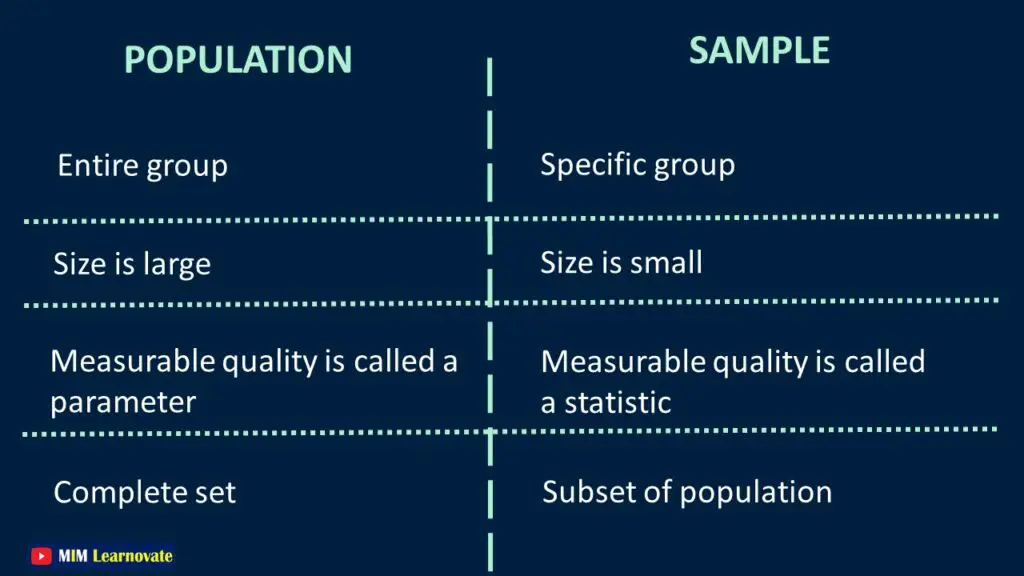
Consider your population to be the ocean, and your sample to be an aquarium. Your sample is a small part of a much larger ocean that you are attempting to comprehend.
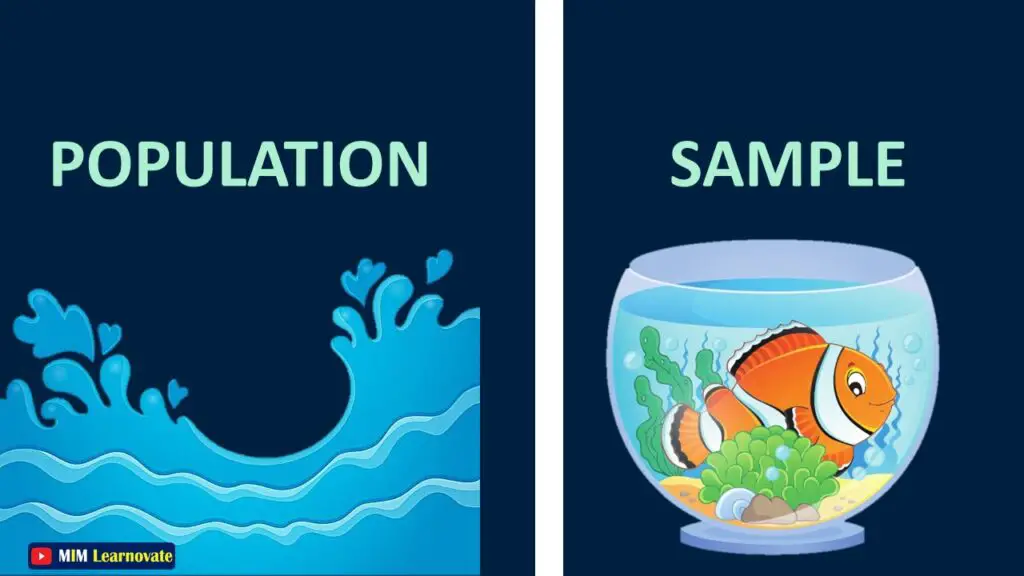
Advantage
Population

- When a study is conducted on the complete population, the results may be more accurate.
Sample

- If sample is representative of the population reliable estimates could be made with less time & efforts used
- When a study is conducted on the complete population, the results may be more accurate.
- If sample is representative of the population reliable estimates could be made with less time & efforts used
Disadvantage
Population

- In most cases it is impossible to test an entire population
Sample

- If the sample selected is not representative of the population the results are not satisfactory
- In most circumstances, testing a whole population is impossible.
- The results are unsatisfactory if the sample chosen is not representative of the population.
Data Collection in Population
When your study issue necessitates a large amount of data or information on every member of the population, you gather data from that group. When the data pool is modest and cooperative in providing all of the essential information, you use population data. Sampling is used in bigger populations to represent areas of the population when data collection is difficult.
Example
1- The analysis of end-of-year grades is an example of data gathering over a small population. The colleges must gather all pupils’ grades and examine their overall performance. They can use the complete population set because they just need to do it for the students at their college.
Data Collection in Sample
When the population is vast, dispersed, or it is difficult to obtain data on individual instances within it, samples are utilized. Then, using a tiny sample of the population, you can form broad hypotheses.
Samples should be drawn at random and should represent the total population as well as each class within it. To do this, statistical techniques such as probability sampling are employed to obtain random samples from each class within the population. This reduces sampling bias while increasing validity.
Example
Consider the polls done throughout the country throughout election season to evaluate voter support for various political parties. Because it is hard to ask millions of voters who their preferred candidate is, they gather the opinions of a few hundred or thousand people from various voting populations.
Why to choose Sample over Population
- Because of the population’s size or inaccessibility, it is sometimes impossible to research the entire population. So better to go for sample.
- Smaller datasets as in sample are easier and more dependable to store and execute statistical analysis on.
- There are fewer costs associated with sample in terms of participants, laboratories, equipment, and researchers.
- Collecting data from a sample is easier and more efficient.
Conclusion
In this article you have learned about the difference between population vs sample with the help of examples, also you have learnt the advantages and disadvantages of sample and population. Also, you have learned about how data is collected from a population and a sample. Download free pdf on the difference between population vs sample.
We hope this article has made you clear about Population vs Sample with Examples. If you have any questions or doubts, mention them in the comments section.
Other articles
Please read through some of our other articles with examples and explanations if you’d like to learn more about research methodology.
Statistics
Methodology
- Research Methods
- Quantitative Research
- Qualitative Research
- Case Study Research
- Survey Research
- Conclusive Research
- Descriptive Research
- Cross-Sectional Research
- Theoretical Framework
- Conceptual Framework
- Triangulation
- Grounded Theory
- Quasi-Experimental Design
- Mixed Method
- Correlational Research
- Randomized Controlled Trial
- Stratified Sampling
- Ethnography
- Ghost Authorship
- Secondary Data Collection
- Primary Data Collection
- Ex-Post-Facto
Research
- Table of Contents
- Dissertation Topic
- Synopsis
- Thesis Statement
- Research Proposal
- Research Questions
- Research Problem
- Research Gap
- Types of Research Gaps
- Variables
- Operationalization of Variables
- Literature Review
- Research Hypothesis
- Questionnaire
- Abstract
- Validity
- Reliability
- Measurement of Scale
- Sampling Techniques
- Acknowledgements




2 Comments
To the mimlearnovate.com webmaster, Thanks for the well-presented post!
To the mimlearnovate.com administrator, Your posts are always a great source of information.